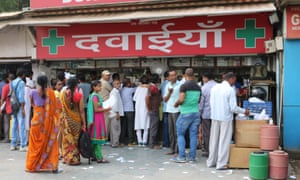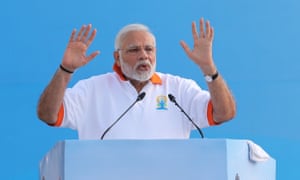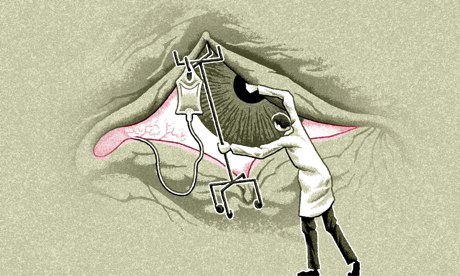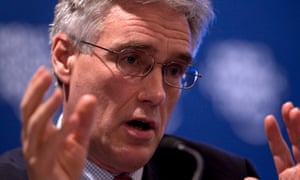'People will forgive you for being wrong, but they will never forgive you for being right - especially if events prove you right while proving them wrong.' Thomas Sowell
Search This Blog
Monday, 25 August 2025
Friday, 1 January 2021
What we have learnt about the limits of science
Thiago Carvalho in The FT
Some years ago, on New Year’s Day, my wife and I noticed that our son, not yet two months old, was struggling to breathe — a belaboured, wheezing effort was all he could manage — and we decided to face the holiday emergency room crush. After assessing his blood oxygen levels, the pediatrician said: “Pack a bag, you will be here all week. He will get worse. Then he will get better.”
Our son had contracted something called respiratory syncytial virus, and it was replicating in his lungs. In a scenario similar to Covid-19, most healthy adults infected with RSV will experience a mild cold, or no symptoms at all. However, some unfortunate infants who contract RSV may suffer a devastating pulmonary infection. For those kids, there are no drugs available that can reliably stop, or even slow down RSV’s relentless replication in the lungs.
Instead, according to Mustafa Khokha, a pediatric critical care professor at Yale University, doctors first give oxygen and then if the child does not improve, there follows a series of progressively more aggressive procedures. “That’s all supportive therapy for the body to recover, as opposed to treatment against the virus itself,” says Khokha. Outstanding supportive care was what our son received, and the week unfolded exactly as his pediatrician predicted. (It was still the worst week of my life.)
For all the progress we have seen in 2020, a patient brought to the emergency room with severe Covid-19 will essentially receive the same kind of supportive care our son did — treatment to help the body endure a viral assault, but not effectively targeting the virus itself. The main difference will be the uncertain outcome — there will be no comforting, near-certain “he will get better” from the attending physician.
Contrast that story with a different one. On a Tuesday morning in early December, in the English city of Coventry, Margaret Keenan, just a few days shy of her 91st birthday, became the first person in the world to receive the BioNTech/Pfizer Covid-19 vaccine outside of a clinical trial. The pace of progress was astonishing. It was less than a year since, in the closing moments of 2019, Chinese health authorities alerted the World Health Organization to an outbreak of a pneumonia of unknown cause in Hubei province.
The Covid-19 pandemic has given us an accelerated tutorial on the promise and the limits of science. With vaccines, testing, epidemiological surveillance, we know where we are going, and we have a good idea how to get there. These are essentially challenges of technological development, reliant now on adequate resources and personnel and tweaking of regulatory frameworks. For other scientific challenges, though, there may be no gas pedal to step on — these include the prickly problems of arresting acute viral infection, or understanding how the virus and the host interact to produce disease. Science, as Nobel Prize-winning immunologist Peter Medawar put it, is the art of the soluble.
In March, when, incredibly, the first human vaccine trials for Covid-19 were kicking off in Seattle, the WHO launched an ambitious clinical trial to try to identify existing pharmaceuticals that could show some benefit against Sars-Cov-2. In October, the WHO declared that all four arms of its Solidarity trial had essentially failed. The search for effective antiviral drugs has not lacked resources or researchers, but in contrast to the vaccine victories, it has yet to produce a single clear success story. The concentrated efforts of many of the world’s most capable scientists, relying on ample public support and private investment, are sometimes not enough to crack a problem.
Perhaps nothing exemplifies this more clearly than what followed Richard Nixon’s signing of the National Cancer Act on December 23 1971. The act was cautiously phrased, but January’s State of the Union address declared an all-out war on cancer: “The time has come in America when the same kind of concentrated effort that split the atom and took man to the moon should be turned toward conquering this dread disease.” The war on cancer would funnel almost $1.6bn to cancer labs over the next three years, and fuel expectations that a cure for the disease would be found before the end of the decade. Curing cancer remains, of course, an elusive target. In 2016, then vice-president Joe Biden presented the report of his own Cancer Moonshot task force.
The success of the Apollo program planted the Moonshot analogy in the science policy lexicon. Some grand challenges in biology could properly be considered “moonshots”. The Human Genome Project was one example. Like the race to the Moon, it had a clear finish line: to produce a draft with the precise sequence of genetic letters in the 23 pairs of human chromosomes. This was, like the propulsion problems solved by Nasa en route to the Moon, a matter of developing and perfecting technology — technology that later would allow us to have a genetic portrait of the cause of Covid-19 in under two weeks.
The cancer context was rather different. In the countdown to the war on cancer, Sol Spiegelman, the director of Columbia University’s Institute of Cancer Research, quipped that “an all-out effort at this time [to find a cure for cancer] would be like trying to land a man on the Moon without knowing Newton’s laws of gravity.” And so it proved.
We now know quite a lot about how the body resists viral infections, certainly much more than we knew about the biology of cancer in 1971. Over 60 years ago, at London’s National Institute for Medical Research, Alick Isaacs and Jean Lindemann exposed fragments of chicken egg membranes to heat-inactivated influenza A virus. In a matter of hours, the liquid from these cultures acquired the capacity to interfere with the growth of not only influenza A, but other, unrelated viruses, as well. Isaacs and Lindemann named their factor interferon. Interferons are fleet-footed messengers produced and released by cells almost immediately upon viral infection. These molecules warn other host cells to ready themselves to resist a viral onslaught.
Viruses rely on hijacking the normal cellular machinery to make more copies of themselves and interferons interfere with almost all stages of the process: from making it more difficult for the virus to enter cells, to slowing down the cellular protein factories required to make the viral capsule, to reducing the export of newly made viral particles. Interferons are now part of our pharmaceutical armoury for diseases as diverse as multiple sclerosis and cancer, as well as hepatitis C and other chronic viral infections.
Multiple interferon-based strategies have been tried in the pandemic, from intravenous administration to nebulising the molecule so that the patient inhales an antiviral mist directly into the lungs. The results have been inconclusive. “A lot of it has to do with the timing,” says Yale immunologist Akiko Iwasaki, “the only stage that recombinant interferon might be effective is pre-exposure or early post-exposure, and it’s really hard to catch it for this virus, because everyone is pretty much asymptomatic at that time.”
This year’s scramble for effective antiviral drugs led to a revival of other failed approaches. In 2016, a team of researchers from the United States Army Medical Research Institute of Infectious Diseases in Frederick, Maryland, and the biotech company Gilead Sciences reported that the molecule GS-5734 protected Rhesus monkeys from being infected with the Ebola virus. GS-5734, or as it is more familiarly known now, remdesivir unfortunately failed in clinical trials. This was a bona fide antiviral, backed up by demonstrations that the drug efficiently blocked an enzyme used by viruses to copy their genome. Ebola was already remdesivir’s third dead-end: Gilead had previously tested GS-5734 against hepatitis C and RSV, and the results were disappointing.
In late April, National Institute of Allergy and Infectious Diseases director Anthony Fauci, a member of the White House coronavirus task force, proclaimed that the US remdesivir trials had established “a new standard of care” for Covid-19 patients. As has happened repeatedly during the Covid-19 crisis, the data backing this claim not been made public, nor had it, at the time, been peer-reviewed.
Fauci explained that the drug had no significant effect on mortality, but claimed that remdesivir reduced hospitalisation times by about 30 per cent. It was the first piece of good news in a spring marked by global lockdowns. Unfortunately, results from a large-scale trial run by the WHO released in the autumn failed to support even the limited claims of the US study (Gilead has challenged the study’s design), and the WHO currently advises against giving remdesivir to Covid-19 patients.
For those who do not naturally control Sars-Cov-2 infection, or who have not been vaccinated, the failure to repurpose or create effective antiviral agents leaves supportive care. We are only beginning to understand the interplay of this new virus and human hosts. It is also a protean affliction, as sex, age, and pre-existing conditions all affect outcomes. The single clearest way to reduce mortality remains the dexamethasone treatment for patients requiring supplemental oxygen initially reported in the UK Recovery trial. It is not a direct attack on the virus, but a way to ameliorate the effects of infection and the immune response to it on the human body. Dexamethasone is, in a very real sense, supportive care.
So what have we learned about the limits of science? First, we were reminded that spectacular successes are built on a foundation of decades of basic research. Even the novel, first-in-class vaccines are at the end of a long road. It was slow-going to get to warp speed. We learned that there are no shortcuts to deciphering how a new virus makes us sick (and kills us) and that there is no ignoring the importance of human diversity for cracking this code. Diabetes, obesity, hypertension — we are still finding our way through a comorbidity labyrinth. Most of all, we have learned an old lesson again: science is the art of the soluble. No amount of resources and personnel, no Manhattan Project, can ensure that science will solve a problem in the absence of a well-stocked toolbox and a solid, painstakingly built theoretical framework.
South Korea recorded its first Covid-19 case on January 20. Eleven days later, Spain confirmed its first infection: a German tourist in the Canary Islands. Spain and South Korea have similar populations of about 50m people. As of publication of this piece, South Korea has had 879 deaths, while Spain reports over 50,000. The west missed its moment. Efficient testing, tracing and containment of Covid-19 was a soluble technological and organisational problem. Here too, we can hear echoes of the war on cancer. The biggest single reduction in cancer mortality did not come from a miracle drug. It was the drop in lung cancer deaths, due to what we could call the war on tobacco. Perhaps Dr Spiegelman might concede that even if we don’t have a law of gravity, we do have a first law of medicine: always start with prevention.
Covid-19 has pushed science to its limits and, in some cases, sharply outlined its borders. This century’s first pandemic finds humanity, with its transport hubs and supply chains, more vulnerable to a new pathogen. But virology, immunology, critical care medicine and epidemiology, to name a few, have progressed immeasurably since 1918. Unfortunately, in a public health emergency, the best science must be used to inform the best policies. In the seasonal spirit of charity, let us say that that has not always been the case in our pandemic year.
Friday, 4 December 2020
Wednesday, 29 July 2020
Does Modern Medicine have a Platypus Problem?
“Early zoologists classified as mammals those that suckle their young and as reptiles those that lay eggs. Then a duck-billed platypus was discovered in Australia laying eggs like a perfect reptile and then, when they hatched, suckling the infant like a perfect mammal.
The discovery created quite a sensation. What an enigma! it was exclaimed.
What a mystery! What a marvel of nature! When the first stuffed specimens reached England from Australia around the end of the eighteenth century they were thought to be fakes made by sticking together bits of different animals. Even today you still see occasional articles in nature magazines asking ‘Why does this paradox of nature exist?’.
The answer is: it doesn’t. The Platypus isn’t doing anything paradoxical at all. It isn’t having any problems. Platypuses have been laying eggs and suckling their young for millions of years before there were any zoologists to come along and declare it illegal. The real mystery, the real enigma, is how mature, objective, trained scientific observers can blame their own goof on a poor innocent platypus.” Robert Pirsig in Zen and the Art of Motorcycle Maintenance
I wondered if this is the attitude of modern medicine towards primary care physician Dr. Stella Emmanuel for her recommendation of Hydroxychloroquine as a panacea for the Covid-19 virus.
I discussed Dr. Emmanuel's prescription with more than one practitioner of modern medicine and they were all unanimous in their condemnation of Dr. Emmanuel’s self publicity approach of making a film with many white coated authority figures in the background. 'She could have presented her data for scrutiny' and 'her claims will not qualify as level 2 evidence' were some of their verdicts.
Hydroxychloroquine, unfortunately, has become a highly political drug which has divided opinion on liberal v conservative lines. ‘Big Pharma’ has also been accused of trying to destroy a cheap solution to the raging Corona virus problem.
In the UK, modern medicine’s success in combating Covid-19 has resulted in over 50,000 deaths and delayed treatment of all other life threatening ailments. Decision making has been a series of flip-flops and U turns and is best illustrated by Telegraph’s Blowe

I wondered if some of the decisions by modern medicine on the lockdown and thereafter have the same amount of evidence required of Dr. Emmanuel and her panacea?
I am willing to take a sceptical approach to Dr Emmanuel as well as to the science based responses of the Boris Johnson government.
But, I also wondered if modern science and medicine ever consider that they too may suffer from the platypus problem?
Monday, 25 June 2018
'This scheme is a lifesaver': India's drive to provide cheap drugs

A taciturn, heavy-set man, Khawar Khan is not given to smiling. Only when he recalls the relief flooding the faces of customers after he has sold medicines at a twentieth of the cost in other chemists does he smile broadly.
“An autorickshaw wallah broke down here. Medicines for his wife used to cost him a catastrophic 10,000 (£111) rupees a month, his entire monthly salary. I gave him a month’s supply for 2,200 rupees. His relief was something to see,” says Khan.
Had the autorickshaw wallah not learned of Khan’s special pharmacy, stocked only with low-cost, generic medicines supplied by the government, he would have become one of the 55 million Indians pushed into poverty each year because of the cost of treating an illness.
The figure was provided by experts at the Public Health Foundation of India and published in the British Medical Journal. Of the 55 million, 38 million fell below the poverty line due to spending on medicines alone.
Khan’s little store is in the crowded and scruffy neighbourhood of Jamia Nagar in New Delhi. The floor is clean. Medicines are neatly stocked on the white shelves. The store is part of the Jan Aushadhi government project to provide generic medicines (identical to branded drugs but, since they don’t include research and development costs, substantially cheaper) to poor people in India so that the potentially ruinous medical costs of an illness can be managed.

Narendra Modi has injected fresh life into the Jan Aushadi scheme since his election as Indian prime minster in 2014. Photograph: Harish Tyagi/EPA
Started in 2008 by a previous government, the scheme foundered, mainly because pharmacies stocked so few drugs that hardly anyone bothered going to them. When the Narendra Modi government came to power in 2014, it gave the project a push, setting a target of 3,000 stores. From 97 pharmacies in 2014, there are now more than 3,000 countrywide.
This is a tiny figure for a country the size of India – some people have to travel long distances to find one – but it’s something. The only problem is providing the pharmacies with enough drugs.
“Most Jan Aushadhi stores have barely 100-150 formulations instead of the promised 600-plus medicines and their numbers are too small compared to the 550,000 pharmacies in India,” says the Public Health Foundation report.
Speak to the owners and they say even basic items, such as calcium supplements or oral rehydration salts, are often in short supply.
“I used to get only 30% of my orders from the government distributor. I hated sending patients away empty-handed, sometimes elderly people who had travelled 20 kilometres. Because I never had sufficient sales volume to make a profit, I was making a loss for a year. So I closed down last month,” says Shivdan Singh, whose shop was in Chhatarpur.
Khan is likewise failing to make a profit, but says he will give it another year before deciding what to do.
Advesh Kumar, deputy marketing manager of the Bureau of Pharma PSUs of India, the government agency that supplies the drugs, admits the stores lacked the full range of drugs. He says the bureau was not geared up to meet the demand generated by the sharp rise in the number of pharmacies.
“There is an undoubted shortage. Demand is higher than we anticipated. It’s also hard to predict which drugs will be needed. But we have got new software that will enable us to handle the issue better and we will plug the gap within two months,’ says Kumar.
As he sits in Khan’s store, Shazad Choudhury looks tense. Judging by the long list of prescriptions he has handed over to Khan, his entire extended family is ill with hypertension, diabetes, heart problems, kidney infections, uterus infections, and depression. Choudhury himself is recovering from a slipped disc.
“Look at all these medicines!” says Choudhury. “I’d be on the streets if I had to get these from a normal pharmacy. This scheme is a lifesaver. But it is tedious for me to keep waiting. There are two drugs I have been waiting for for a fortnight. The government must ensure the shops are fully stocked,” he says.
Outside the pharmacy, Kishore Dutt, a construction worker, is leaving, with medicines for his grandmother. He says some of his relatives told him to let his 82-year-old grandmother die because the medicines were too expensive. Poor families often have to make inhuman choices of this kind. Treat an elderly person, who may not even get better, and let the children go hungry? Or let that person die so that the children can eat and live?
Dutt heard about the Jan Aushadhi scheme and located Khan’s pharmacy. “I’m rushing back to my nani (grandmother). I hope these [drugs] will cure her,” he says.
Dutt was lucky that his grandmother’s doctor prescribed the generic name of the drugs. Many doctors in India, despite the Medical Council of India’s order to prescribe generic medicines, fail to do so. The perception that generic means no good and branded means good persists, even among doctors.
“The doctor down the road told a patient that generic drugs were ineffective. They need to be educated because they are doing a great disservice to the poor,” says Khan.
Monday, 22 May 2017
The Rise of Open-Label Placebos
Linda Buonanno had suffered 15 years of intense cramps, bloating, diarrhoea and pain she describes as “worse than labour”. She was willing to try anything to get relief from her irritable bowel syndrome (IBS) and leapt at the chance to take part in a trial of an experimental new therapy. Her hope turned to disappointment, however, when the researcher handed her a bottle of capsules he described as placebos containing no active ingredients.
Nonetheless, she took the pills twice daily. Four days later, her symptoms all but vanished. “I know it sounds crazy,” says Buonanno, of Methuen, Massachusetts. “I felt fantastic. I knew they were just sugar pills, but I was able to go out dancing and see my friends again.”
Placebos have a reputation problem. It is widely believed they are only effective when those taking them are deceived into thinking they are taking real drugs. As such, prescribing dummy or fake treatments is unethical. Yet in Buonanno’s case there was no deception. And she is not alone. A review of five studies, involving 260 patients, published last month found that “open-label” placebos – those that patients know contain no active medication – can improve symptoms in a range of conditions. This growing body of evidence raises a number of important questions. How do open-label placebos work? Which conditions do they work for? And should doctors prescribe them?
Dr Jeremy Howick first began asking about placebos when a herbal doctor suggested he drink ginger tea to combat cat allergy symptoms. He was highly sceptical, but three days later his runny noses, sneezing and insomnia stopped. Twenty years later, Howick is a clinical epidemiologist at the University of Oxford. Last month, his group published a review of previous research that has compared the effects of giving patients open-label placebos with no treatment.

The first was led by Professor Ted Kaptchuk, of Harvard Medical School, who gave 80 IBS patients, including Buonanno either no treatment or open-label placebo pills. He found those who took placebos for three weeks experienced greater improvements in symptoms, including less severe pain. Sadly for Buonanno, when the study ended she was unable to obtain further effective placebos and her symptoms returned.
In another of the studies in Howick’s review, chronic lower back pain patients openly given dummy pills to add to their existing treatments reported an average 30% pain reduction. In the three other review studies, people given open-label pills reported reduced symptoms for depression, lower back pain, and attention deficit hyperactivity disorder.
Howick acknowledges that a limitation of these trials is that participants knew whether they were getting placebos or not being treated. Yet other research has demonstrated placebos trigger real physiological changes. They are known to increase the circulation of endorphins, the body’s own natural painkillers, and of dopamine, a neurotransmitter associated both with pleasurable activities and perceptions of pain.
Placebos appear to work only in certain circumstances. Research suggests they can be effective when the brain and perception can help modulate symptoms such as pain, fatigue and itch. Dummy pills also vary in their effectiveness according to genetics. A 2012 study found IBS patients differ in their sensitivity to placebos based on the variants of a gene called COMT they had, probably because this can affect their dopamine levels.
So if ethically given placebos can work, surely doctors should be prescribing them? “I’m not advocating doctors handing them out like Smarties,” says Howick, whose book Doctor You, about overmedicalisation and the body’s self-healing capabilities, will be published later this year. “I do think, however, that this research is telling us we should start to recognise the benefits of doctors being realistically positive when they talk to patients.”
Kaptchuk is more enthusiastic about wider open-label placebo use, despite antipathy among doctors. “If enough of these studies have positive results in different conditions, I hope we can convince the medical community that there’s something useful here.”

The placebo effect: is there something in it after all?
That might be more likely once more work has been done to explain how open-label placebos work. One hypothesis is that patients who have previously got better after being treated by trusted doctors might experience subconscious boosts to levels of endorphins and neurotransmitters, thereby improving their symptoms. This is the conditioning effect, made famous by the Russian psychologist Ivan Pavlov, who trained dogs to salivate when they heard a buzzer they associated with being fed, even when no food was presented.
Another possibility is that patients might be told that placebos have worked before for people with their conditions, leading to a conscious expectation of improvements, resulting in chemical releases that relieve their symptoms.
Both of these probably play a role, yet Kaptchuk says neither can fully explain the experiences of participants in his IBS study, most of whom had been through multiple failed treatments. He thinks a relatively recent theory called embodied cognition is closer to the mark. This suggests that the possibility of improvement can trigger subconscious signals to pass between different parts of the body, resulting in chemical releases that alleviate symptoms.
Buonanno, meanwhile, has some thoughts on the potential mechanisms of open-label placebos, but is more interested in the fact that they have worked for her. Since late last year, Kaptchuk and his gastroenterologist colleague Anthony Lembo have been prescribing them to her as a patient. “I feel perfect,” she says. “It’s like I was never sick. I think it’s something to do with having confidence in my doctors, in the way they tell me it’s going to work, having hope and really wanting something to work. I don’t really understand it. But what I do know is that, after 23 years, I’ve got my life back.”
Sunday, 19 June 2016
Why failure is the key to flying high

Matthew Syed in The Guardian
We want our children to succeed, in school and, perhaps even more importantly, in life. But the paradox is that our children can only truly succeed if they first learn how to fail. Consider the finding that world-class figure skaters fall over more often in practice than low-level figure skaters. At first sight this seems contradictory. Why are the really good skaters falling over the most?
The reason is actually quite simple. Top skaters are constantly challenging themselves in practice, attempting jumps that stretch their limitations. This is why they fall over so often, but it is precisely why they learn so fast. Shizuka Arakawa of Japan estimates that she endured some 20,000 falls as she progressed from a beginner to an Olympic champion.
Lower-level skaters have a quite different approach. They are always attempting jumps they can already do very easily, remaining within their comfort zone. This is why they don’t fall over. In a superficial sense, they look successful, because they are always on their feet. The truth, however, is that by never failing, they never progress.
What is true of skating is also true of life. James Dyson worked through 5,126 failed prototypes for his dual cyclone vacuum before coming up with the design that made his fortune. These failures were essential to the pathway of learning. As Dyson put it: “You can’t develop new technology unless you test new ideas and learn when things go wrong. Failure is essential to invention.”
Even in areas of life where failure is potentially catastrophic, it is still vital to respond positively. In aviation, for example, every aircraft is equipped with two almost-indestructible black boxes: one records the electronic information from the on-board computers and the other records sounds in the cockpit. When there is a crash, these boxes are recovered and analysed so that enlightened changes can be enacted. This means that the same mistake never happens again. It is this constant willingness to learn from failure that means aviation has become one of the world’s safest forms of transportation. Last year the accident rate for major airlines was just one crash for every 8.3 million take-offs.
In healthcare, however, things are very different. Clinicians don’t like to admit to failure, partly because they have healthy egos (particularly the senior doctors) and partly because they fear litigation. The consequence is that instead of learning from failure, healthcare often covers up failure. The direct consequence is that the same mistakes are repeated. According to the Journal of Patient Safety, 400,000 people die every year in American hospitals alone due to preventable error. That is like two jumbo jets crashing every day or 9/11 happening every few days. In the UK, too, the numbers are shocking. Until healthcare learns to respond positively to failure, things will not improve.
But let us return to children. One of the seminal mistakes in education in the 1970s was the attempt to equip children with confidence by giving them lots of successes (setting the bar very low). The consequence was that the self-esteem of kids became bound up with success, and they became unable to take risks and crumpled as soon as they hit a proper challenge.
We need to flip this approach. In a complex world, failure is inevitable. It is those individuals and institutions that have the resilience and flexibility to face up to failure, learn the lessons and adapt which ultimately excel.
Thursday, 5 May 2016
Medical Council of India similar to BCCI?
The Supreme Court has given the Centre a deserved rebuke by using its extraordinary powers and setting up a three-member committee headed by former Chief Justice of India R.M. Lodha to perform the statutory functions of the Medical Council of India. The government now has a year to restructure the MCI, the regulatory body for medical education and professional practice. The Centre’s approach to reforming the corruption-afflicted MCI has been wholly untenable; the Dr. Ranjit Roy Chaudhury expert committee that it set up and the Parliamentary Standing Committee on Health and Family Welfare in the Rajya Sabha had both recommended structural change through amendments to the Indian Medical Council Act. Now that the Lodha panel will steer the MCI, there is hope that key questions swept under the carpet at the council will be addressed quickly. Among the most important is the need to reduce the cost of medical education and increase access in different parts of the country. This must be done to improve the doctor-to-population ratio, which is one for every 1,674 persons, as per the parliamentary panel report, against the WHO-recommended one to 1,000. In fact, it may be even less functionally because not all registered professionals practice medicine. In reality, only people in bigger cities and towns have reasonable access to doctors and hospitals. Removing bottlenecks to starting colleges, such as conditions stipulating the possession of a vast extent of land and needlessly extensive infrastructure, will considerably rectify the imbalance, especially in under-served States. The primary criterion to set up a college should only be the availability of suitable facilities to impart quality medical education.
The development of health facilities has long been affected by a sharp asymmetry between undergraduate and postgraduate seats in medicine. There are only about 25,000 PG seats, against a capacity of 55,000 graduate seats. The Lodha committee is in a position to review this gap, and it can help the Centre expand the system, especially through not-for-profit initiatives. There is also the contentious issue of choosing a common entrance examination. Although the Supreme Court has allowed the National Eligibility-cum-Entrance Test, some States are raising genuine concerns about equity and access. A reform agenda for the MCI must include an admission procedure that eliminates multiplicity of entrance examinations and addresses issues such as the urban-rural divide and language barriers. The Centre’s lack of preparedness in this matter, even after it was deliberated by the parliamentary panel, is all too glaring. The single most important issue that the Lodha committee would have to address is corruption in medical education, in which the MCI is mired. Appointing prominent persons from various fields to a restructured council would shine the light of transparency, and save it from reverting to its image as an “exclusive club” of socially disconnected doctors.
Friday, 5 February 2016
When economists ignore the human factor, we all pay the price
Economics is not a hard science, and mathematical models won’t explain why people behave as they do. A much broader perspective is needed.
The Guardian recently asked nine economists whether we’re heading for another global financial crash and they gave many different answers. Yet still we turn to economists as if they were physicists, armed with scientific predictions about the behaviour of the body economic. We consumers of economics, and economists themselves, need to be more realistic about what economics can do. More modesty on both the supply and the demand side of economics will produce better results.
Following the great crash that began nearly a decade ago, there has been some soul-searching about what economics got wrong. Probably the self-criticism should have been more far-reaching, both in academia and banking, but it’s there if you look for it. In particular, the economic thinkers loosely clustered around George Soros’s Institute for New Economic Thinking (Inet) have produced a telling account of what went wrong.
Adair Turner, who saw top-level decision-making as head of Britain’s Financial Services Authority and now chairs Inet, gives a measured, cogent version of the critique in his book Between Debt and the Devil. Yes, leading academic economists did challenge the mathematical models of market perfection and, yes, financial markets may have followed oversimplistic versions of those models. Nonetheless, Turner argues, “the dominant strain of academic economics and of policy-making orthodoxy” failed to see the crisis coming, and actually contributed to it.
The key flaws were the efficient market hypothesis and the rational expectations hypothesis: economists too often assumed that market actors not only behave rationally but do so according to the same mental models deployed by economists. (Soros himself has spent a half century trying to expose this fallacy.) Modern big-picture economics (macroeconomics) also “largely ignored the operations of the financial system and in particular the role of banks”.
Market fundamentalism understood itself as the diametric opposite of the communist command economy, but in fact made the same cardinal mistake: to believe that a rational model could encompass, predict and optimise the dynamic complexity of collective human behaviour. As Roman Frydman and Michael Goldberg write: “Like a socialist planner, the economist thus believes that he can accomplish great feats, because he supposes that he has finally uncovered the fully determined mechanism which drives market outcomes.”
Large parts of academic economics fell prey to what has been called physics envy, by analogy with the Freudian notion of penis envy. Like some other areas of social science, it aspired to the status, certainty and predictability of physics. I have long thought that this hubris was fed by the fact that economics, alone among the social sciences, has a Nobel prize. Strictly speaking, it is only the Sveriges Riksbank Prize in Economic Sciences in Memory of Alfred Nobel, endowed by the Swedish central bank and first awarded in 1969, not one of the original Nobel prizes. But everyone calls it the Nobel prize. Moreover, politicians and decision-makers listen to economists in ways that they don’t, for example, listen to political scientists of the rational choice school that dominates many American university departments. This may partly be because a politician who practised rational choice politics would soon be kicked out of office, whereas the public has had to pick up the bill for those who practised rational choice economics.
This does not mean we should not pay attention to economists, nor that economics is unworthy of a Nobel prize. It just means it’s not a hard science like physics. Done properly, it takes account of culture, history, geography, institutions, individual and group psychology. John Stuart Mill said: “A man is not likely to be a good economist if he is nothing else,” and John Maynard Keynesobserved that an economist should be “mathematician, historian, statesman and philosopher in some degree”.
In another remarkable formulation, Keynes wrote: “Economics is essentially a moral science.” Indeed, one could argue that the Nobel prize for economics belongs somewhere midway between those for physics, literature and peace.Economics is, at best, a multidimensional, evidence-based craft, alert to all the influences on human behaviour, at once ambitious in scope and modest in its claims for what we can ever predict in human affairs.
What should follow from this revised, new-old understanding of the character and place of economics? I don’t know enough about university economics courses to say whether they need to adapt, but I was struck by a manifesto published a couple of years ago by economics students at Manchester University. This advocated an approach “that begins with economic phenomena and then gives students a toolkit to evaluate how well different perspectives can explain it”, rather than mathematical models based on unrealistic assumptions. (A colleague of mine claims to have heard a fierce argument between two economists in the common room of Nuffield College, Oxford, which culminated in one exclaiming to the other: “All right, assume immortality!”)
If economics is like other disciplines, it probably changes more slowly than it should, because of the strong inertial effect of older faculty personally invested in a certain way of doing the subject. Then there’s the conduct of major players, be they ministers, central bankers or business leaders. I recently read a splendidly robust lecture by the veteran investor Charlie Munger, Warren Buffett’s partner in Berkshire Hathaway, delivered in 2003, well before the crash. “Berkshire’s whole record has been achieved without paying one ounce of attention to the efficient market theory in its hard form,” he said, adding that the results of that efficient market doctrine in corporate finance “became even sillier than they were in the economics”.
Munger’s sage advice was to restore economics’ proper multidisciplinary character, not overweighting what can be counted against the unquantifiable, nor yielding to the craving for false precision, nor privileging theoretical macroeconomics over the real-life microeconomics that helped guide Berkshire’s long-term investment decisions.
We ordinary punters should learn the same lesson. We should ask of our economists, as of our doctors, only what they can deliver. There is a scientific component to medicine, larger than that in economics, but medical studies themselves indicate how much our health depends on other factors, especially psychological ones, and how much is still unknown. Economists are like doctors, only less so.
Thursday, 2 January 2014
Artificially prolonged old age is the new iatrogenic malady. - When it's time to go, let me go, with a nice glass of whisky and a pleasing pill

Wednesday, 13 November 2013
What Does it Mean to be a Physician?
Whitcomb, Michael E. MD
Sunday, 2 June 2013
Cancer medication as low as Rs 1,000/month on way
MUMBAI: It's widely known that a month's dose of cancer drugs can cost lakhs, but what isn't common knowledge is that Tata Memorial Hospital's doctors are working on alternatives that could cost less than Rs 1,000 a month.
Dubbed the metronomic treatment protocol, it comprises daily consumption of a combination of low-dose medicines that are cheap because they have been around for decades. "There is no need to worry about patents or recovery of billions spent on research,'' said Dr Shripad Banavali, head of the medical oncology department of Tata Memorial Hospital, Parel, who has been working on the low-dose-low-cost therapies.
His colleague, Dr Surendra Shastri sums up the mood well: "The metronomics experiment is path-breaking in terms of providing good quality and affordable cancer care for a majority of the over 10 lakh cancer cases diagnosed in India each year.'' These findings could revolutionize cancer care in most developing countries, he said.
The catch is, however, that this branch is still in research stage. The conventional cancer treatment comprising chemotherapy is given at "maximum tolerated doses" which are tested and have reams of research to back it. As against this, in metronomic therapies, the drugs are given at very low doses. "But side-effects are fewer and patients have a good quality of life,'' said Dr Banavali.
The word metronomics is borrowed from music; musicians use the metronome to mark time and hence rhythm. Patients are asked to take these medicines for a period of 21 days or more before taking a break of a week; such a cycle continues for months.
Dr Banavali's work has been published in the May issue of the medical journal Lancet Oncology. Thousands of patients have been on metronomic treatment in Tata Memorial Hospital as well as its rural centre, with a sizeable number managing to control the growth of cancer. "In India, the main challenge in cancer is not just finding cures, but to develop affordable treatments'' he said.
In fact, the metronomic work arose out of such cost concerns over a decade back. The Tata doctors found that many patients were lost to treatment because they were overwhelmed by the cost of medicines. "Moreover, many patients came so late for treatment that we had to turn them away without any medicines,'' said Dr Banavali. Instead of turning away such patients, the Tata team decided to adopt the metronomic treatment as palliative treatment that was being tested out in various parts of the world. "We gave them drugs that would help in pain or at least ensure that their case doesn't worsen," he adds.
But the results surprised them. In a large group of children with blood cancers called acute myeloid leukemia (AML), they found that metronomic maintenance treatment had helped increased survival rate to 67%. The group then started its own innovation, going ahead of the rest of the world. "The West used the same set of medicines for all forms of cancer, but we introduced personalised medicines for various types of cancers,'' said Dr Banavali.
The Lancet paper, titled 'Has the time come for metronomics in low-income and middle-income countries', mentions combination of drugs used for four cancers (see box). The Tata doctors feel that these drugs may work as well for newly developed tumours. "While the developed world is going after 'drug discoveries', that is discovering new drugs which are very costly for our patients, we are going after 'drug repositioning', that is using time-tested drugs for the treatment of cancer," said Dr Banavali. For example they are using drugs likemetformin (an anti-diabetic drug), sodium valproate (an anti-seizure drug) and propranolol (an anti-hypertensive drug) in the treatment of cancer.
The Lancet paper said, "The combination of metronomic chemotherapy and drug repositioning might provide a way to overcome some of the major constraints associated with cancer treatment in developing countries and might represent a promising alternative strategy for patients with cancer living in low- and middle-income countries.''
Metronomics chemotherapy works at three levels. It attacks tumours while working on the "micro-environment", like the blood vessels, around the tumour. Thirdly, it works on the immuno-modulating system of the body. "Unless the metronomic dose works on all these three fields, it may not work,'' said the doctor.
Survivor of twin blows, counselor for others
On the occasion of Cancer Survivors Day on June 2, members of Ugam, an NGO, will put up a skit at Tata Memorial Hospital to underline the problems of parents whose children suffer from cancer. Comprising childhood cancer survivors, Ugam members counsel cancer patients undergoing treatment at Tata Memorial Hospital. One of its founder members, Shalaka Mane (29), who lost her right eye to cancer, will be there too. She feels people discriminate against cancer patients. "I feel there is a need to increase awareness about the treatment of cancer in society and the government, and enable these families to get financial help," she says. Diagnosed with blood cancer when she was eight years old, she barely got back to being at the top of her class when she was found to have brain cancer. "I was in Class XII and planning to take up medicine, but it wasn't to be,'' she says. The second cancer was so virulent that she lost her eye. But she emerged victorious a second time and completed her masters. She now teaches at Kalvidhai Mission High School, Andheri, which she attended as a student. "My principal and teachers never discriminated against me because of my illness. I enjoy my job," she adds.
'Cancer can't affect my future'
Artist Sachin Chandorkar is a poster boy of sorts at the Tata Memorial Hospital, Parel. At 28, he has won several awards (one from chief minister Prithviraj Chavan last month) for his murals and sculptures. But the Tata connection comes from his victory over cancer when he was five years of age. He was suffering from Hodgkin's Lymphoma. "I remember feeling irritated due to the itch on my head. When I would stratch my head, tufts of hair would come into my hands. I would then start crying," says Chandorkar, who studied at the JJ School of Arts. He usually doesn't talk about his battle with the Big C. "When my mother and sisters sometimes talk about it, I ask them to stop. I have decided that cancer is a part of my past and cannot affect my future,'' he adds.
.png)
.png)
.png)
.png)







